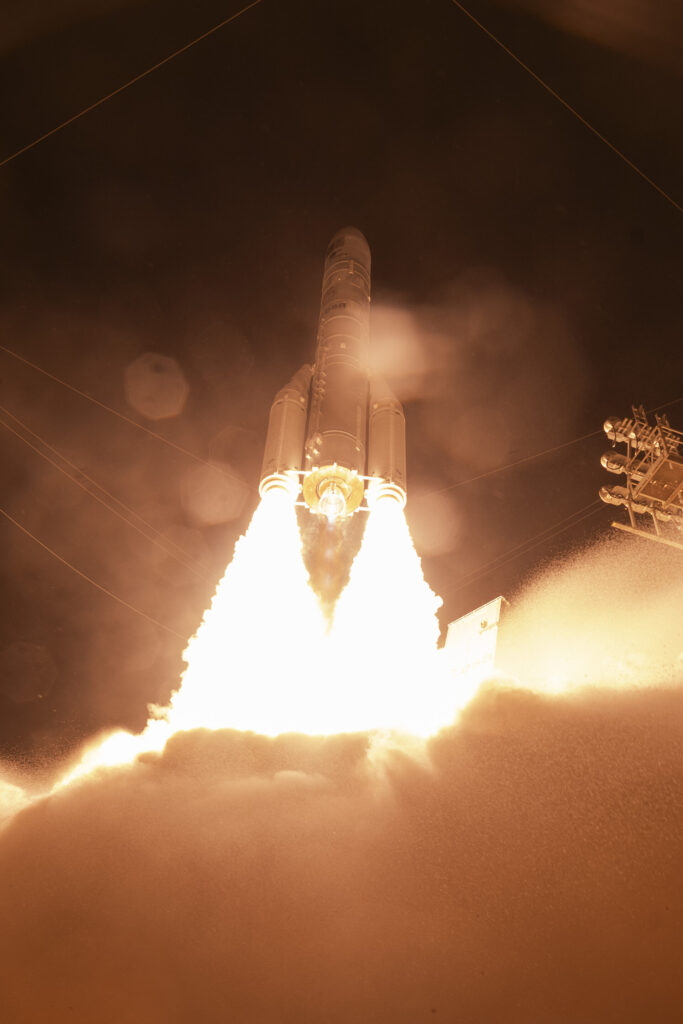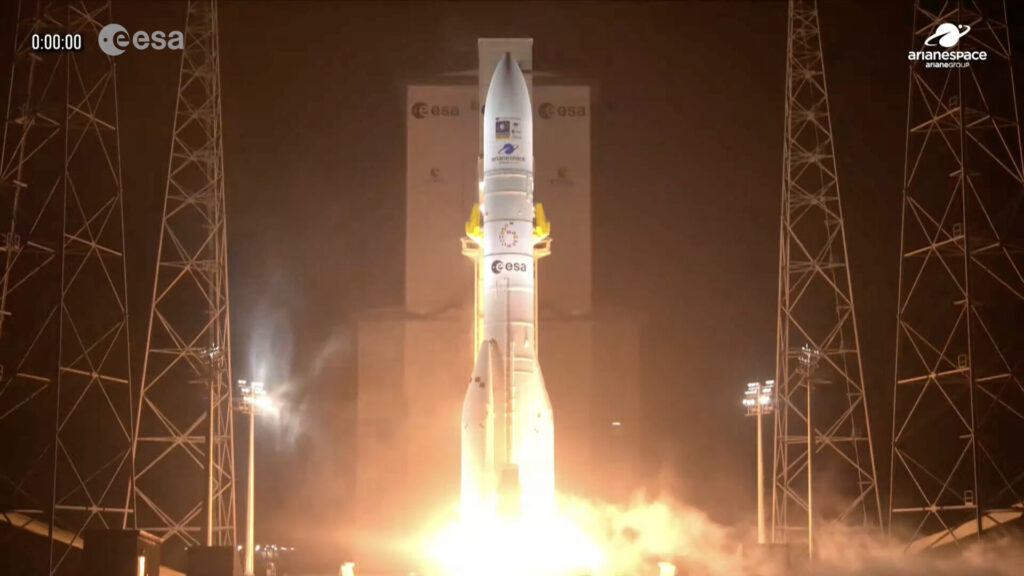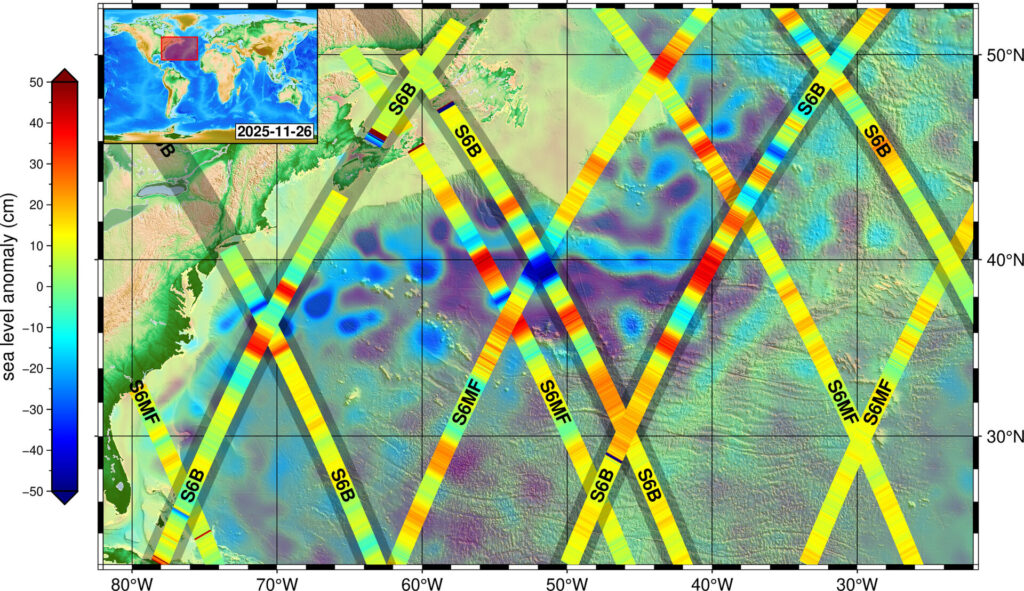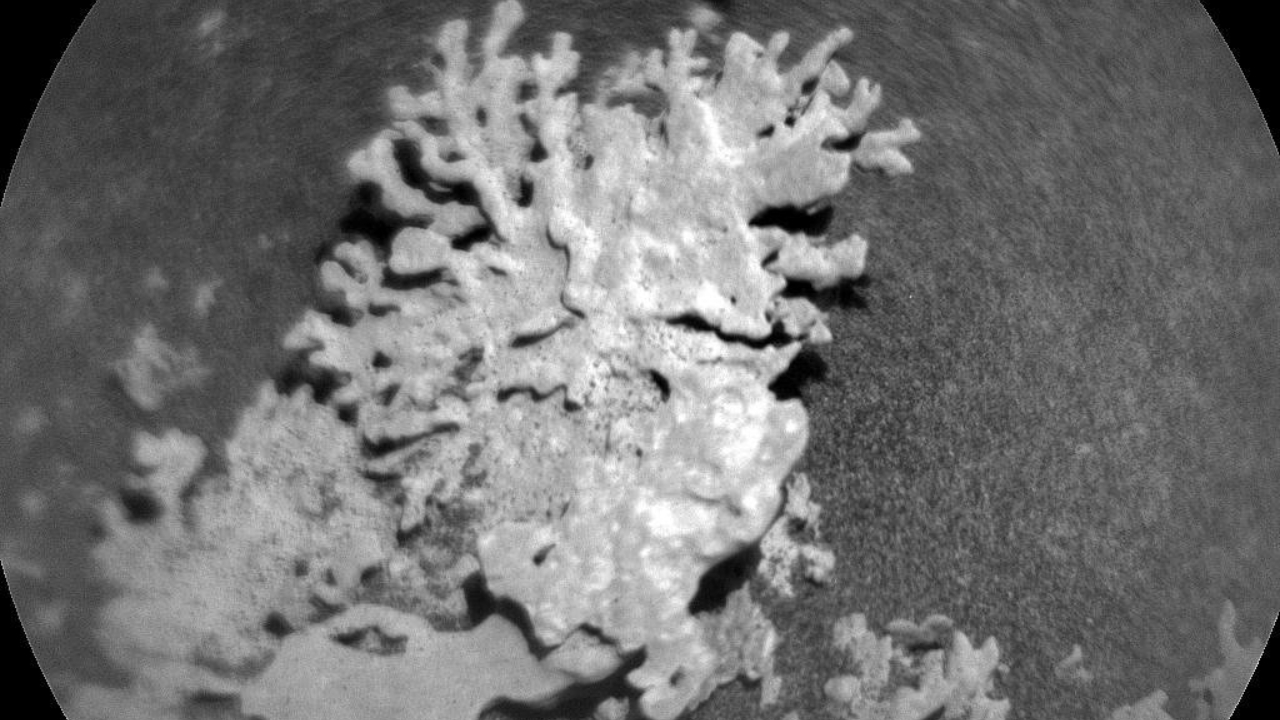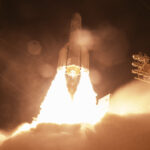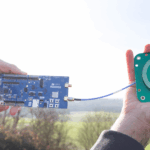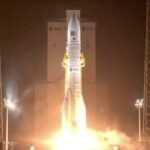Now Reading: Watch: MetOp-SG-A1 and Sentinel-5 launch
-
01
Watch: MetOp-SG-A1 and Sentinel-5 launch
Watch: MetOp-SG-A1 and Sentinel-5 launch
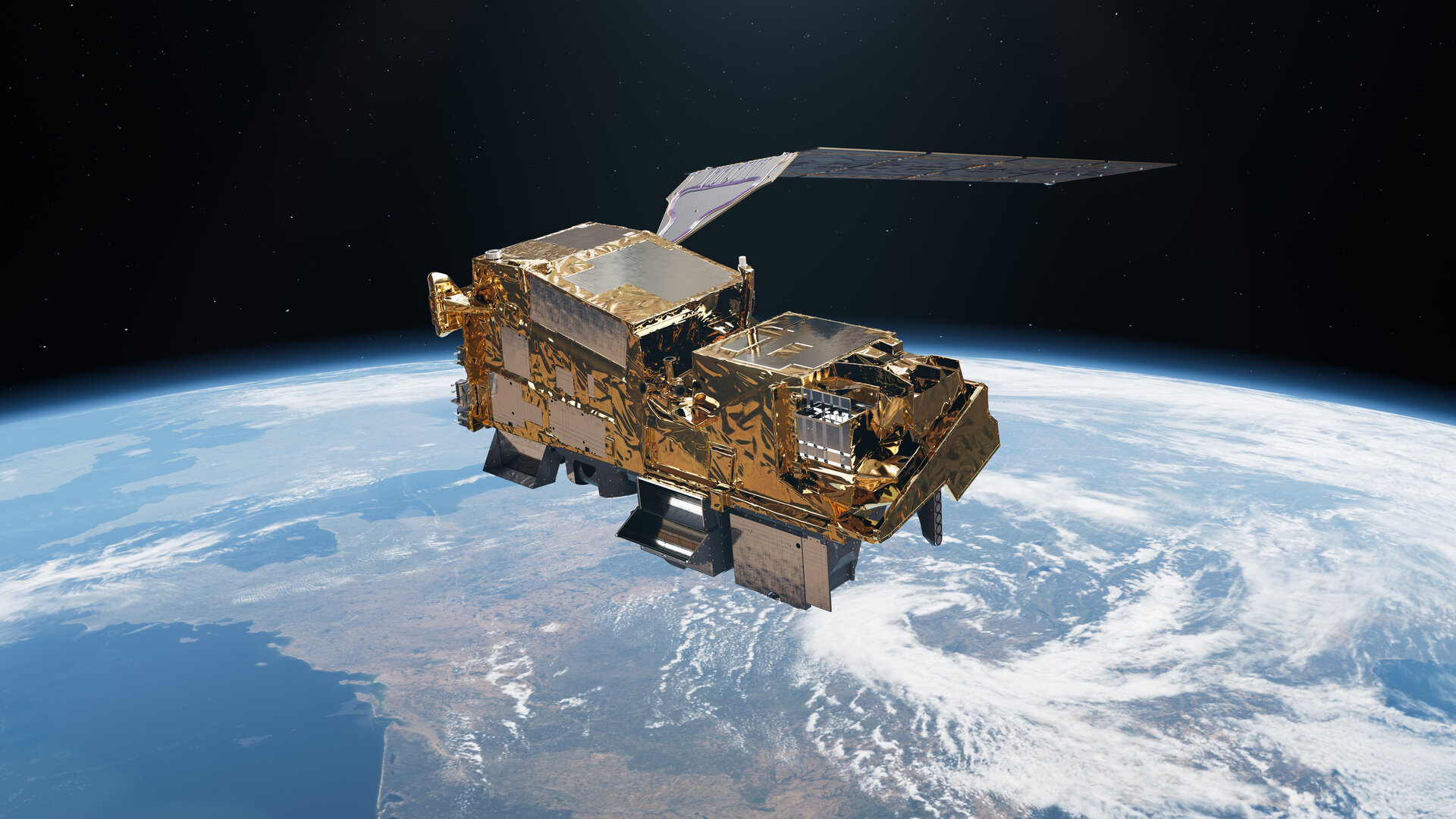

06/08/2025
207 views
8 likes
Europe’s first MetOp Second Generation, MetOp-SG-A1, weather satellite – which hosts Copernicus Sentinel-5 as part of its instrument package – is set for liftoff on an Ariane 6 rocket from Europe’s Spaceport in Kourou, French Guiana, on 13 August 2025 at 02:37 CEST (12 August 21:37 Kourou time).
Watch live on ESA Web TV One.
Follow the launch live on Wednesday 13 August 2025 (all times in CEST)
02:10: Streaming from Arianespace starts
02:14: Introductions, interviews and mission status updates
02:37: Liftoff and live commentary
03:02: Break
03:30: Streaming resumes with live commentary
03:46: Acquisition of signal
04:00: Streaming ends
About MetOp Second Generation
Data from the first-generation MetOp satellites have been the most significant factor in enhancing the accuracy of European weather forecasts for periods ranging from 12 hours to 10 days. But now it’s time for the MetOp-Second Generation mission, or MetOp-SG for short, to take over the reigns – not only ensure the continuity of global observations from polar orbit for weather forecasting and climate analysis, but to do it even better.
The mission as a whole not only ensures the continued delivery of global observations from polar orbit for weather forecasting and climate analysis for more than 20 years, but also offers enhanced accuracy and resolution compared to the original MetOp mission – along with new measurement capabilities to expand its scientific reach.
MetOp-SG-A1 is the first in a series of three successive pairs of satellites. It will be followed by its partner satellite, MetOp-SG-B1, next year.
Each MetOp-SG pair is made up of an A-type and a B-type satellite that carry a different, but complementary, suite of remarkable instruments. The package totals ten different instruments across both satellites, some of which are based on the sound heritage of the first MetOp series, and some of which are completely new.
The A-type satellites, the first of which is the soon-to-launch MetOp-SG-A1, carry six instruments: a next-generation infrared atmospheric sounder, a microwave sounder, a multispectral imaging radiometer, a novel multiviewing, multichannel, multipolarisation imager, a radio occultation sounder (which is also embarked on the MetOp-SG-B satellites), and the European Commission’s Copernicus Sentinel-5 spectrometer.
The MetOp Second Generation mission is thanks to the long-standing cooperation between ESA and Eumetsat, where ESA is responsible for designing and building the satellites, and Eumetsat procures the launch service, develops the ground segment, operates the satellites and provides the data to the worldwide meteorological user community.
About Copernicus Sentinel-5
Building on the success of the Copernicus Sentinel-5 Precursor satellite, the new Copernicus Sentinel-5 introduces an advanced imaging spectrometer. The first of these cutting-edge instruments, Sentinel-5A, is integrated into MetOp-SG-A1, and will work in synergy with other onboard instruments.
This cutting-edge instrument delivers important data on the composition of the atmosphere. It measures the distribution of atmospheric trace gases such as ozone, nitrogen dioxide, sulphur dioxide, formaldehyde, glyoxal, carbon monoxide and methane, as well as aerosols. These components not only affect the air we breathe, but also our climate.
Copernicus Sentinel-5 mission marks a step change in monitoring and forecasting global air quality. It delivers daily global data on atmospheric gases and aerosols. Its observations include key air pollutants, essential climate variables, and stratospheric ozone that protects us from ultraviolet radiation.
Data from the Sentinel-5 will improve our understanding of air pollution, ozone, UV radiation and climate change, and support services that inform us about related risks, including forecasts and health alerts. This is crucial because outdoor air pollution contributes to more than four million premature deaths worldwide each year, while over-exposure to UV radiation can also cause skin cancer.
Stay Informed With the Latest & Most Important News
Previous Post
Next Post
-
 012024 in Review: Highlights from NASA in Silicon Valley
012024 in Review: Highlights from NASA in Silicon Valley -
 02Panasonic Leica Summilux DG 15mm f/1.7 ASPH review
02Panasonic Leica Summilux DG 15mm f/1.7 ASPH review -
 03From Polymerization-Enabled Folding and Assembly to Chemical Evolution: Key Processes for Emergence of Functional Polymers in the Origin of Life
03From Polymerization-Enabled Folding and Assembly to Chemical Evolution: Key Processes for Emergence of Functional Polymers in the Origin of Life -
 04How New NASA, India Earth Satellite NISAR Will See Earth
04How New NASA, India Earth Satellite NISAR Will See Earth -
 05And Thus Begins A New Year For Life On Earth
05And Thus Begins A New Year For Life On Earth -
 06Astronomy Activation Ambassadors: A New Era
06Astronomy Activation Ambassadors: A New Era -
07SpaceX launch surge helps set new global launch record in 2024












